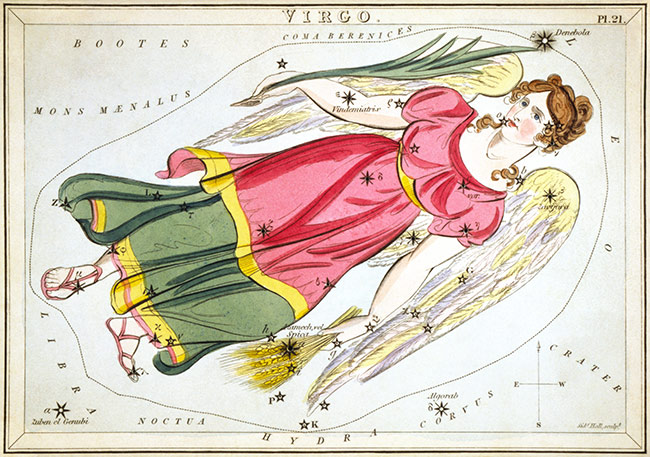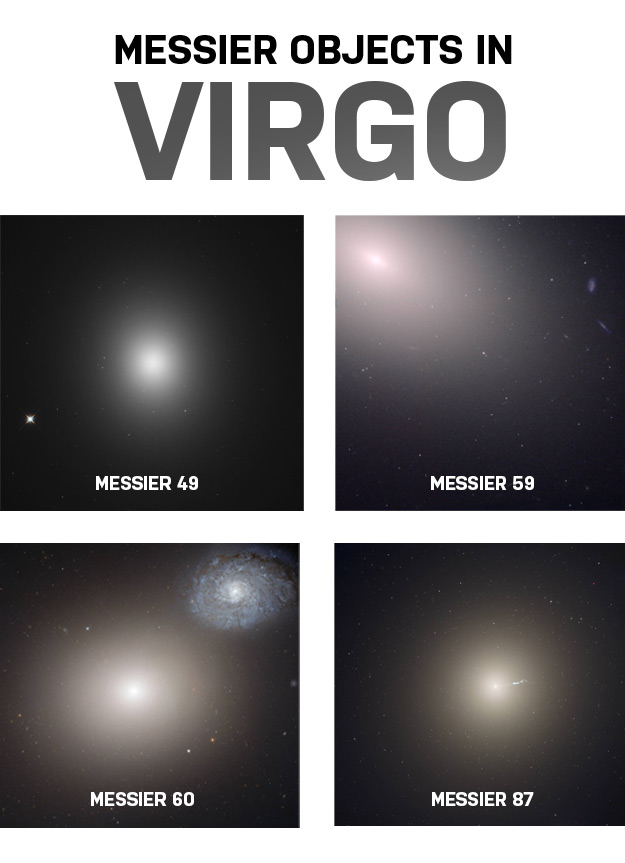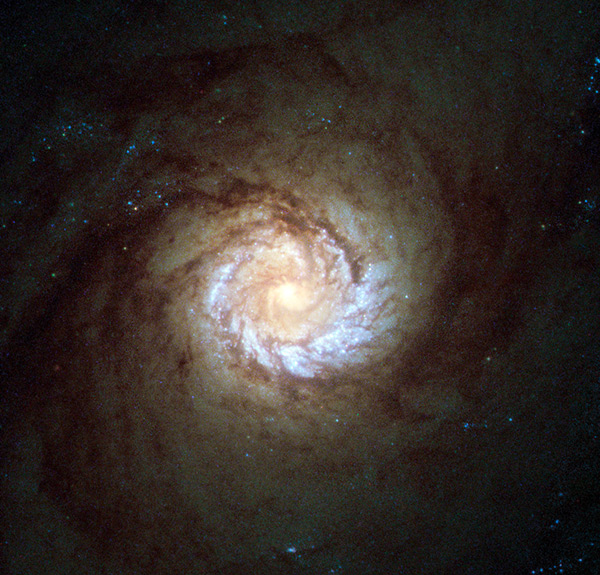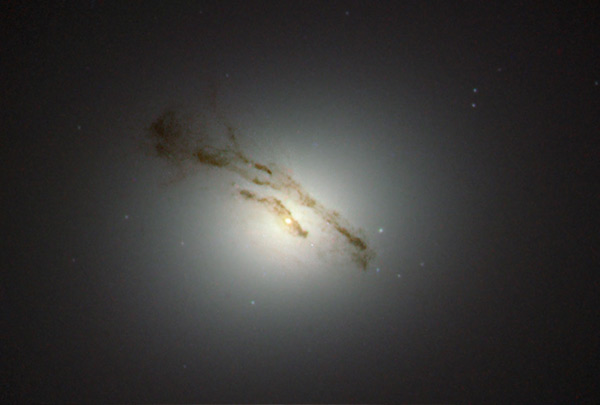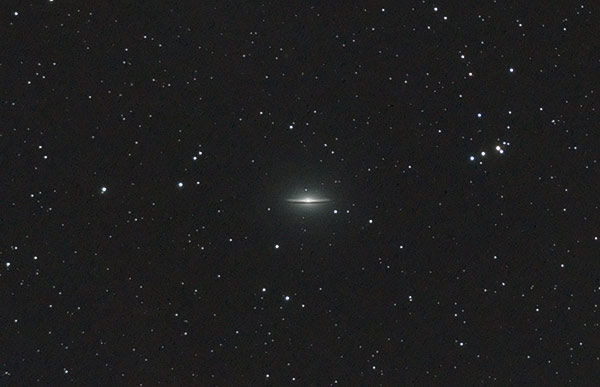The Constellation Virgo
March heralds the beginning of spring for us in the northern hemisphere. Spring constellations become exciting to see as they signify this time of year.
These spring constellations are best seen in the evening night sky from March to late June within the northern hemisphere.
The most prominent northern spring constellations are Ursa Major, Boötes, Leo, Cancer, Virgo, and Hydra.
The Constellation Virgo
The constellation Virgo is one of the oldest-known star patterns in the night sky. Its name is Latin, meaning the virgin. Within the months of March and April, Virgo begins to become visible throughout the entire night.
It can continue to be seen from May, all the way into the month of July. It is not until late August or September when Virgo begins her descent under the horizon.
Virgo is one of the 12 zodiac constellations that was first cataloged by the Greek astronomer Ptolemy in the 2nd century and it is the second-largest constellations in the sky; Hydra being the largest.
As the largest zodiac constellation, the Sun takes 44 days to pass through it, longer than any other on the ecliptic path.
Virgo also contains the autumn equinox point, which lies close to the star Beta Virginis (they are east from the star Spica). This is due to the effects of precession.
The autumn equinox is one of the two points in the sky where the celestial equator crosses the ecliptic; the other point is in the constellation Pisces.
Virgo occupies an area of 1294 square degrees. It is located in the third quadrant of the southern hemisphere (SQ3) and can be seen at latitudes between +80° and -80°.
Virgo lies between Leo to the west and Libra to the east. Virgo’s bright star Spica makes it easy to locate this constellation. Spica can be found by following the curve of the Big Dipper to Arcturus; a star located within the Boötes constellation.
From there continue to follow that same curvature to locate Spica. Spica is Virgo’s brightest star. There is an enormous galaxy cluster within Virgo’s boundaries that amateurs with good telescopes can explore.
Virgo also has 20 stars with known planets, more than any other constellation. Despite its’ appearance, the constellation Virgo is a treasure trove for astronomical discovery.
There are also two meteor showers associated with the constellation; the Virginids and the Mu Virginids.
Stars in Virgo
Spica – α Virginis (Alpha Virginis)
Spica is the brightest star in Virgo and also one of the brightest stars in the sky. It is a spectroscopic binary star and rotating ellipsoidal variable.
This means it is a system whose two stars are so close together they are egg-shaped rather than spherical, and they can only be separated by their spectra. The primary is a blue giant, as well as a variable star of the Beta Cephei type.
Spica, along with Arcturus (the brightest star in Boötes) and Denebola (second-brightest star in Leo), are part of the Spring Triangle asterism (not to be confused with the Summer Triangle).
However some sources differentiate instead of Denebola, the star Regulus (the brightest star in Leo) is the third star to make up the spring triangle.
Although it is dimmer, Denebola is more equilateral for the asterism. The Spring Triangle is an astronomical asterism involving an imaginary triangle drawn upon the celestial sphere.
This triangle connects the constellations of Boötes, Virgo, and Leo. It is visible rising in the southeastern sky of the northern hemisphere between March and May.
The name Spica comes from the Latin spīca virginis, meaning “Virgo’s ear of grain.” Spica is approximately 260 light-years distant from the solar system.
Zavijava – β Virginis (Beta Virginis)
Beta Virginis belongs to the spectral class F9 V. It is only 35.65 light-years distant from the Sun and is only the fifth brightest star in the constellation.
Porrima – γ Virginis (Gamma Virginis)
Porrima, Gamma Virginis, is a binary star. Both stars in the Gamma Virginis system are of the spectral type F0V and have similar visual magnitudes, 3.65 and 3.56.
Auva – δ Virginis (Delta Virginis)
Delta Virginis is a red giant belonging to the spectral class M3 III. It is approximately 198 light-years distant. Having an apparent magnitude of 3.4 making it visual without binoculars. Delta Virginis is a high-velocity star.
Vindemiatrix – ε Virginis (Epsilon Virginis)
Epsilon Virginis is the third brightest star in Virgo, belonging to the spectral class G8 III. It has a visual magnitude of 2.826 and is 109.6 light-years distant.
Heze – ζ Virginis (Zeta Virginis)
Zeta Virginis is a main-sequence star of the spectral type A3 V. It is 74.1 light-years distant and has an apparent magnitude of 3.376.
Zaniah – η Virginis (Eta Virginis)
Eta Virginis is a triple star system in Virgo. This star can be seen with the naked eye. It has a visual magnitude of 3.890 and it belongs to the spectral class A2 V.
Syrma – ι Virginis (Iota Virginis)
Iota Virginis belongs to the spectral class F6 III. It is 69.8 light-years distant with an apparent magnitude of 2.44.
Rijl al Awwa – μ Virginis (Mu Virginis)
This is a yellow star belonging to the spectral class F2III. It has an apparent magnitude of 3.87 and is approximately 60.9 light-years distant.
70 Virginis
70 Virginis is a yellow dwarf of the spectral type G2.5Va. It has a visual magnitude of 5.00 and is 58.7 light-years distant.
The star is believed to be evolving into a subgiant because it is brighter than most stars of its spectral type. An extrasolar planet was discovered in the star’s orbit in 1996.
χ Virginis (Chi Virginis)
Chi Virginis is a binary star. It is approximately 294 light-years distant, with an apparent magnitude of 4.652 making it visible to the naked eye. Chi Virginis belongs to the spectral class K2 III, meaning that it is an orange giant, one that has a mass double that of the Sun. It is 182 times more luminous than the Sun. A massive planet, roughly 11 times that of Jupiter was discovered in the star’s orbit in July 2009.
61 Virginis
61 Virginis is a yellow main sequence dwarf belonging to the spectral class G5V. It has a magnitude of 4.74. It is approximately 27.9 light-years distant and believed to be a disk star. 61 Virginis is the first well established yellow dwarf almost identical to the Sun with a potential Super-Earth in its orbit.
109 Virginis
109 Virginis is a white main sequence dwarf of the spectral type A0V. It is the seventh brightest star in the constellation with a magnitude of 3.73. The star is 129 light-years distant from the solar system.
ν Virginis (Nu Virginis)
Nu Virginis is a red giant belonging to the spectral class M1IIIab. It is a semiregular variable star with an apparent magnitude of 4.04 and approximately 313 light-years distant.
Virgo constellation star chart. International Astronomical Union.
Deep-sky objects in Virgo
Virgo Cluster
The Virgo Cluster is a galaxy cluster found in the constellations Coma Berenices and Virgo.
The cluster’s center is located approximately 53.8 million light-years away from the solar system, at the center of the Virgo Supercluster, the larger cluster of galaxies that also contains the Local Group, which in turn includes the Andromeda Galaxy and the Milky Way.
The Virgo Cluster contains about 1300 galaxies, possibly even up to 2000.
Markarian’s Chain – The Virgo Cluster of Galaxies.
Messier 49 (M49, NGC 4472)
Messier 49 is the brightest galaxy in the Virgo Cluster. It is an elliptical galaxy with a visual magnitude of 9.4, about 55.9 million light-years distant.
It was discovered by Charles Messier in February 1771. M49 contains about 5900 globular clusters, 10 billion years old on average.
Two contenders for stellar-mass black holes, ones formed by gravitational collapses of massive stars, were discovered in an M49 cluster in the last decade.
The galaxy is believed to have a supermassive black hole with 565 million solar masses at its core. Only one supernova has been spotted in the galaxy, SN 1969Q in June 1969.
M49 can be found at 4.1° west-southwest of the bright star Epsilon Virginis.
Messier 58 (M58, NGC 4579)
Messier 58 is a barred spiral galaxy in Virgo. It is one of the brightest galaxies in the Virgo Cluster. It has an apparent magnitude of 10.5 and is about 62 million light-years distant.
M58 was discovered along with the elliptical galaxies M59 and M60 by Charles Messier in April 1779.
Two supernovae have been observed in the galaxy: SN 1988A in January 1988 and SN 1989M in June 1989.
See a complete list of Messier Objects on the NASA website.
Messier 59 (M59, NGC 4621)
Messier 59 is an elliptical galaxy about 60 million light-years away from the solar system, located in the Virgo Cluster.
It has a visual magnitude of 10.6. Both M59 and M60 were discovered by the German astronomer Johann Gottfried Koehler in April 1779.
Messier 60 (M60, NGC 4649)
Messier 60 is also an elliptical galaxy within the Virgo Cluster. It has an apparent magnitude of 9.8, and is the third brightest giant elliptical galaxy in the cluster.
It is about 55 million light-years distant. A supernova was discovered in it in 2004.
Messier 61 (M61, NGC 4303)
Messier 61 is a spiral galaxy located within Virgo. It has an apparent magnitude of 10.18 and is estimated to be 52.5 million light-years distant. M61 was discovered by the Italian astronomer Barnabus Oriani in May 1779.
Messier 61 Galaxy. ESA/Hubble & NASA; Acknowledgment: Detlev Odenthal
Messier 84 (M84, NGC 4374); (84 – 90 discovered in 1781 by Charles Messier)
Messier 84 is a lenticular galaxy located in the inner core of the Virgo cluster. This galaxy has a disk of fast rotating gas and stars, indicating that it likely contains a supermassive black hole within its center. Two supernovae have been discovered in the galaxy: SN 1957 and SN 1991bg.
Messier 84. ESA/Hubble & NASA.
Messier 86 (M86, NGC 4406)
Messier 86 is a lenticular galaxy near the center of the Virgo Cluster. It is approaching our galaxy at the speed of 244 kilometers per second, as a result of falling toward the heart of the Virgo Cluster from the opposite side.
The galaxy has a visual magnitude of 9.8 and is estimated to be 52 million light-years away.
Messier 87 (M87, NGC 4486)
Messier 87 is a supergiant elliptical galaxy located near the center of the Virgo Cluster of galaxies.
It is the second brightest galaxy in the cluster, with a visual magnitude of 9.59, and is also one of the brightest radio sources known.
The galaxy is one of the most massive in our local universe. It can be observed in a small telescope. It is about 53.5 million light-years distant.
The motion of planetary nebulae between Messier 87 and Messier 86 indicates that the two galaxies are moving toward each other. M87 has a supermassive black hole at its center.
It is classified as a type-cD galaxy, or a supergiant D class galaxy, that has a large halo of stars as well as an elliptical nucleus with a large diffuse envelope that contains no dust.
M87 can be located by following the line from Epsilon Virginis to the bright star Denebola in the constellation Leo.
Messier 89 (M89, NGC 4552)
Messier 89 is another elliptical galaxy in Virgo. The galaxy belongs to the Virgo Cluster.
It has a visual magnitude of 10.73 and is approximately 50 million light-years distant. There are about 2000 globular clusters within 25’ of the galaxy.
It has a surrounding disk of gas and dust that extends about 150,000 light-years from the galaxy and jets of hot particles extending about 100,000 light-years outward.
Messier 90 (M90, NGC 4569)
Messier 90 is a spiral galaxy with a visual magnitude of 10.26, approximately 58.7 million light-years distant.
It is a member of the Virgo Cluster. M90 has been classified as an anemic galaxy, a spiral characterized by low contrast between the disk and the galaxy’s spiral arms.
Sombrero Galaxy – Messier 104 (M104, NGC 4594)
Messier 104 is an unbarred spiral galaxy with a visual magnitude of 8.98. It is estimated to be 29.3 million light-years distant.
It can easily be seen through a telescope. It is located in the southern part of the Virgo Cluster, about 11.5° west of Spica.
The galaxy contains between 1,200 and 2,000 globular clusters. It contains a supermassive black hole at its center.
The Sombrero Galaxy was discovered by Pierre Méchain in March 1767.
Eyes Galaxies (NGC 4435 – NGC 4438, Arp 120)
The Eyes Galaxies are a pair of interacting galaxies located in the Virgo Cluster. NGC 4435 is a barred lenticular galaxy.
It holds a number of young stars in its central regions. There is starburst activity as a result of the interaction with the neighboring galaxy NGC 4438.
NGC 4438 has a distorted disk and tidal tails due to it interacting with other galaxies. The galaxies are about 52 million light-years distant.
NGC 4216
NGC 4216 is an intermediate spiral galaxy in the Virgo Cluster, approximately 40 million light-years from the solar system.
It has a visual magnitude of 11. It is one of the largest and brightest galaxies in the cluster.
The galaxy is metal-rich and shows a deficiency of neutral hydrogen in its optical disk.
Siamese Twins (Butterfly Galaxies) – NGC 4567 and NGC 4568
NGC 4567 and NGC 4568 form a pair of spiral galaxies in the Virgo Cluster. The galaxies are in the process of colliding with each other.
Their apparent magnitude is 10.9 and is estimated to be 59.4 million light-years from the solar system. The Siamese Twins were discovered by William Herschel in 1784.
NGC 4526
NGC 4526 is a lenticular galaxy that belongs to the Virgo cluster.
The galaxy has a visual magnitude of 10.7 and is about 55 million light-years distant. Two supernovae were discovered in the galaxy: SN 1969E in 1969 and SN 1994D in 1994.
NGC 4261
NGC 4261 is an elliptical galaxy with a visual magnitude of 11.4. It lies behind the Virgo Cluster, approximately 96 million light-years distant.
The galaxy is estimated to be 60,000 light-years across. Within this galaxy’s center it contains a supermassive black hole, one with 400 solar masses.
3C 273
3C 273 is a quasar; an energetic and distant active galactic nucleus, or quasi-stellar radio source. This quasar was the first one of its kind to be identified and is also the closest of its kind.
It is approximately 2.443 gigalight years away. It is the brightest and most luminous quasar in the sky.
It was one of the first extragalactic X-ray sources discovered in 1970. 3C 273 is classified as a blazar, a very compact quasar linked with what is estimated to be a supermassive black hole at the center of an active giant elliptical galaxy.


